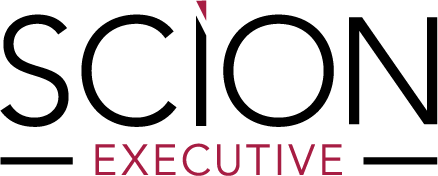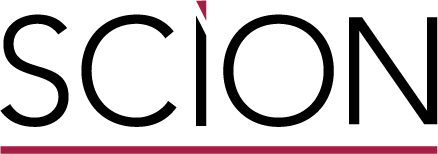
21 Nov Top Human Resources Metrics to Track to Maximize Your Team
Few could summarize metrics more concisely than Peter Drucker: “What gets measured gets improved.”
In the realm of human resources (HR), this saying holds significant relevance. HR metrics are the compass that guides businesses in understanding, managing, and optimizing their workforce. These key metrics provide a window into the intricacies of HR operations, fostering informed decision-making, improving employee productivity, and bolstering a company’s path to success.
In this blog post, we shed light on HR metrics, why they matter, and which ones you should be monitoring closely to maximize the potential of your team. We’ll also receive guidance from experts in the field. Whether you’re a seasoned HR manager or a business leader seeking to harness the power of your workforce, join us as we uncover the top HR metrics to track to maximize your team.
What Are Human Resource Metrics?
HR metrics are key performance indicators (KPIs) that enable companies to assess various aspects of their workforces and HR processes. These data points provide quantifiable insights into various aspects of HR operations and employee management, enabling data-informed decision-making that promotes company success.
HR metrics can be broken down into several categories:
Recruitment metrics, such as acceptance rate, cost per hire, demographics, headcount, new-hire turnover, time to hire, and time to productivity.
Training and development metrics, such as training completion rate, time to completion, training effectiveness, and training costs per employee.
Performance metrics, such as company performance, employee performance, goal tracking, performance and potential, and revenue per employee.
Employee engagement and retention metrics, such as employee satisfaction, retention rate, retention rate per manager, talent turnover rate, total turnover rate, and voluntary turnover rate.
Click here to learn about (or refresh your memory of) the standard metrics listed above.
Which Metrics Do I Monitor?
While there are numerous HR KPIs your company can monitor, experts recommend monitoring the metrics that will assist your business in achieving its goals. “It is not the best use of time or resources to track certain metrics just for the sake of tracking them or because you see other organizations doing the same,” affirmed Lindsey Garito, SHRM-SCP, former director of human capital management and total rewards at Summit Health.
For best results, choose HR metrics that are congruous with your business strategy, and pay special attention to metrics surrounding employee experience and retention.
Core HR Metrics Every Company Should Track
Optimizing your team and its processes requires tracking various HR metrics to assess performance, identify areas for improvement, and make data-driven decisions. The specific metrics that are “best” for your organization can vary depending on your goals, industry, and the challenges you’re presently facing. However, here are some essential HR metrics to consider tracking to optimize your team:
Benefits Participation Rate: This metric gauges how effectively employees are engaging with and utilizing the benefits and perks offered by your company. Understanding participation rates helps companies manage costs related to benefits administration and adjust offerings based on employee preferences.
Cost Per Hire (CPH): This key HR metric provides the average cost of acquiring a new employee. The cost per employee can inform decisions around employee recruitment and performance.
Diversity, Equity, and Inclusion (DEI): This measure assesses the representation of various demographic groups within an organization. These groups may include gender, race, ethnicity, age, sexual orientation, disability status, and more. By collecting and analyzing the data related to these aspects of diversity, companies can gain valuable insights into the composition of their workforce and the effectiveness of their diversity and inclusion initiatives.
Kendra Davis-Roberts, a people insights strategist and founder of KDR Analytics, emphasizes the significance of being mindful of this diversity metric: “It’s important to see if any employees are having different experiences in processes that should be equal, like hiring, promotions, average salary, and more.”
Employee Retention Rate: This measures the percentage of employees who remain with the company over a specific time period, providing insights into job satisfaction, engagement levels, and employee morale. This metric and the employee turnover rate (below) are best monitored in conjunction.
Employee Turnover Rate: This metric is a measure of the number of employees who leave a company during a specific period of time, typically expressed as a percentage of the total workforce. This KPI is useful for resource planning (budgeting for hiring and training, for example) and can point to bigger issues, such as ineffective hiring and management, low compensation, and lack of advancement.
If you’re facing challenges with turnover, HR Magazine suggests discovering the reason for increased employee attrition rates: “To identify what underlying issues may be plaguing your company, you’ll need to determine who is heading for the exits and why. Obtaining this information is even more important than knowing how many people are leaving, because it provides an opportunity to pinpoint and fix problems to slow attrition.”
Employee Satisfaction: This KPI is a reflection of how content, engaged, and motivated individual employees are within their roles and the broader work environment. Employee satisfaction is such an important metric because it can correlate to turnover.
Quality of Hire: This metric assesses how well new hires meet or exceed the expectations and requirements of their roles and how effectively they integrate into the organization. In other words, it measures the value that new hires bring to an organization, providing key insights into the effectiveness of your recruitment process, from the interviewing process to hiring a candidate.
Time to Hire: This measures the efficiency of a company’s hiring process by calculating the average number of days it takes to fill a vacant position from the moment it’s posted. This critical HR metric offers valuable insights into the effectiveness of your recruitment strategies and helps you identify areas for improvement, such as bottlenecks in the interview and hiring processes.
Informed decisions and a proactive approach to these HR metrics can transform your workplace, making it a more inclusive, efficient, and satisfying environment for your employees and a catalyst for your organization’s growth. As you embark on your journey toward HR excellence, it’s not just about measuring; it’s about using these insights to improve team performance, enhance manager effectiveness, and boost business performance. Embrace the power of HR metrics! They hold the key to unlocking your team’s full potential and maximizing your organization’s success.
Scion Executive Search: Shaping Tomorrow’s Leadership Landscape
Scion Executive Search stands as the beacon of excellence in the realm of executive recruitment and talent acquisition. With an unwavering commitment to identifying and placing top-tier executive talent, our mission is clear: to empower businesses with the leadership they need to thrive. Our proven track record, combined with a dedication to inclusivity, diversity, and innovation, makes us the partner of choice for those seeking to elevate their leadership teams. At Scion Executive Search, we not only bridge the gap between talent and opportunity but also pave the way for a brighter future. Join us in shaping tomorrow’s leadership landscape, where excellence knows no bounds.
About the Author
Jennifer Warren, Technical Writer (she/her/hers)
Jennifer Warren is an enthusiastic and meticulous technical writer at Scion Executive Search (SES). Committed to excellence and constant growth, Jennifer draws on her strong editorial and organizational skills to expedite executive searches for businesses and organizations. Those who work with Jennifer praise her for her initiative, strong language skills, transparent communication, and enthusiasm to support her clients and colleagues.
Jennifer has spent most of her career in the publishing industry. Before joining SES, she worked at a crafts book publisher for seven years, first as a production editor, preparing manuscripts for print, and then as an associate editor, curating content for new publications. Jennifer has also worked in the nonprofit sector as a grant writer, preparing and submitting applications for program funding. She graduated Summa Cum Laude from California State University East Bay with a Bachelor of Arts in English.


